






 |
|||||||
 |
 |
 |
 |
 |
|||
 |
|||||||
|
H.H. Scott Type 208 Looking back at the Golden Age of hifi, one name that always seems synonymous with good sound is H.H. Scott. Beginning in 1946, H.H. Scott (as opposed to E.H. Scott…different company) made a variety of high quality home audio equipment, and was instrumental in getting studio quality high fidelity sound out of labs and studios and into homes. Some of the most revered audio equipment of the 50’s and 60’s were Scott products; their gold faced tuners and receivers being the most easily recognizable and iconic. Below is a somewhat less well known Scott amplifier, the Type 208 Stereo Power Amplifier. This is wonderful sounding 7591 based push pull amp, rated on paper at 32 watts per channel. Made from 1961-1963, the 208 was on the market side by side with the Scott 299C, a very similar 7591 amplifier that had the addition of a preamp section making it a fully integrated amplifier. The 208 was the sparser product; meant to be built into a cabinet and out of sight, it is not a flashy piece of gear like its pretty cousins. But it is one hell of a sweet sounding amplifier, and I actually prefer its sound to the 299C. With its built in preamp and filters, the 299C has a lot more circuit between the source and speaker than the 208 does. Many of us have seen the Mapleshade reimagined Scott amps, which have all had the preamp parts removed and the circuit simplified. Certainly there must be more to it, but I wonder how closely the rather spartan 208 resembles a reimagined Mapleshade 299C? With its front mounted speaker terminal strips and simple top mounted RCA, this is a no-nonsense no-fuss amplifier. A real industrial beauty, white gloves not needed. But it is compact, nicely laid out, and of good build quality. The Scott transformer set is robust and hefty, the power and rectifier tubes are stacked in a line just in front of the iron, and the whole package is neat and orderly. Scott still finished the amp nicely, the unit is chrome plated and the text is screened. But this was never intended to grace a posh 1960’s living room without some clothes on. So how does it sound? Very good! The Scott 208 has a nice, open and powerful sound. It has a rich tonality and a relaxed feeling, but it is still fast and light on its feet. This amp brings up plenty of detail, it does not feel veiled or fuzzy in any way. It has most of the deep golden tone that the 299C had on voices, but is much clearer sounding. Smooooooth like a 60s tube amp should be. Its effortless. Vintage audio is a discovery process, like audio Archaeology. There are still so many superb antique and vintage tube amps out there that are really good, solid performers, with superior transformers and a sound that belies their age. In this vein, the Scott 208 is an enjoyable vintage piece that is not embarrassed by anything modern amps can do. If you can find a well-restored Scott 208 like the unit below, it's a great antique solution and could be the centerpiece for a vintage system that really kicks ass. Highly recommended! |
||||||||
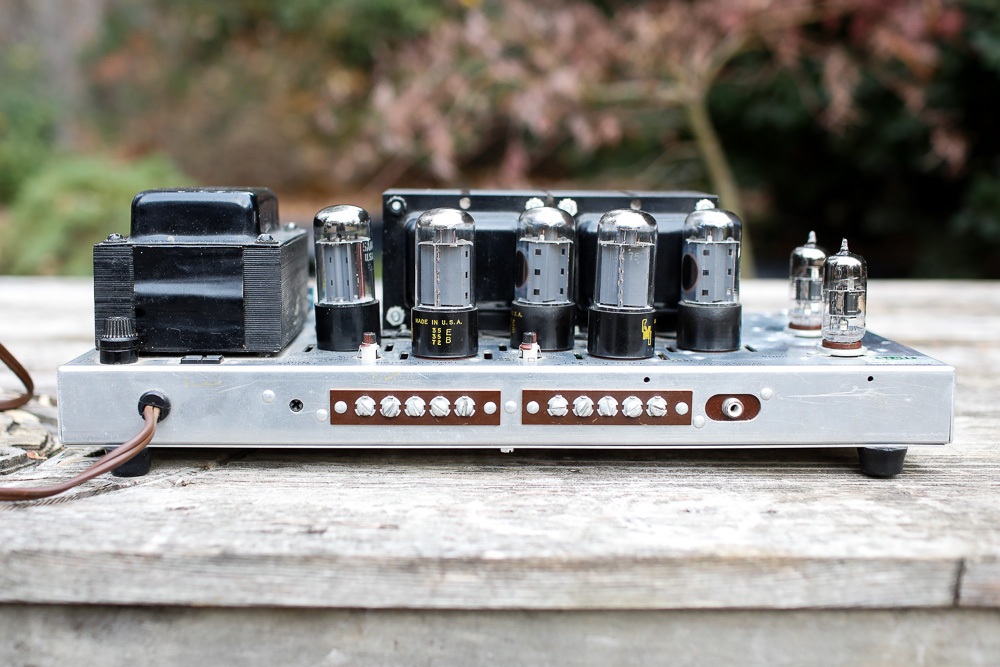
|
||||||||
|
The modest and unassuming Scott 208 is a great sounding 7591 amplifier, a treasure from the Golden Age of Hifi! |
||||||||
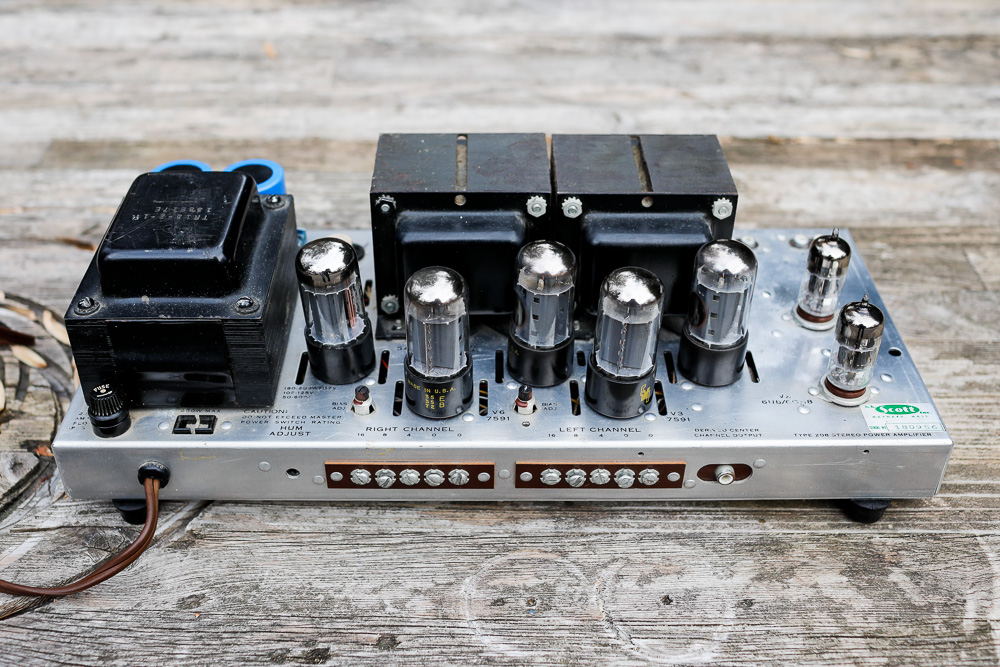
|
||||||||
|
Think of this amp like the engine in your car; you know all the specs, etc but it was meant to be hidden away under the glossy paint of the hood, not mounted on the dashboard. |
||||||||
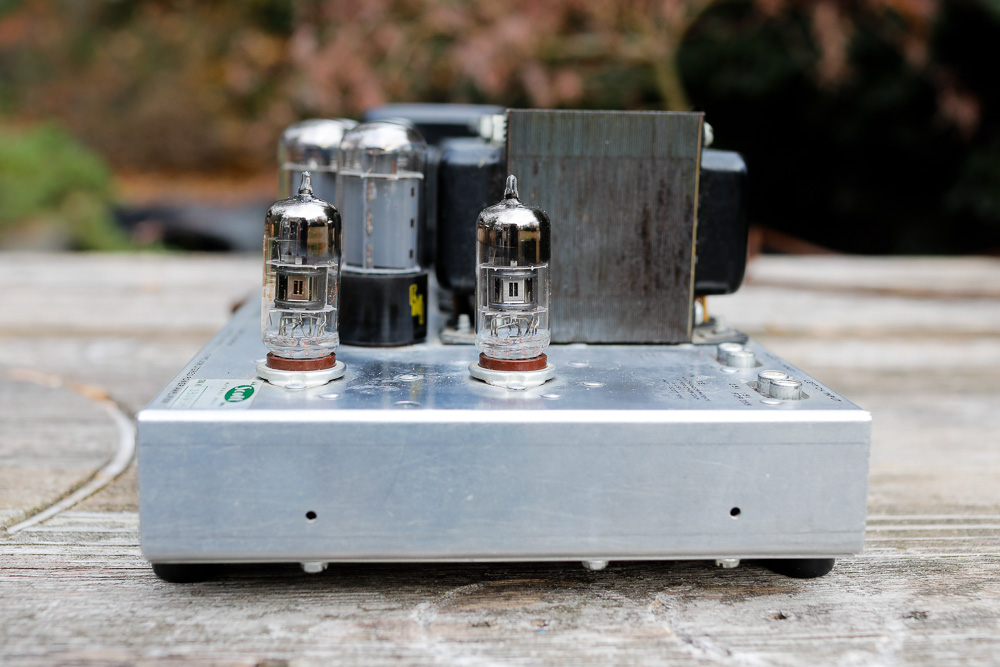
|
||||||||
|
The drivers are 6GH8/6U8, a common and inexpensive tube. |
||||||||
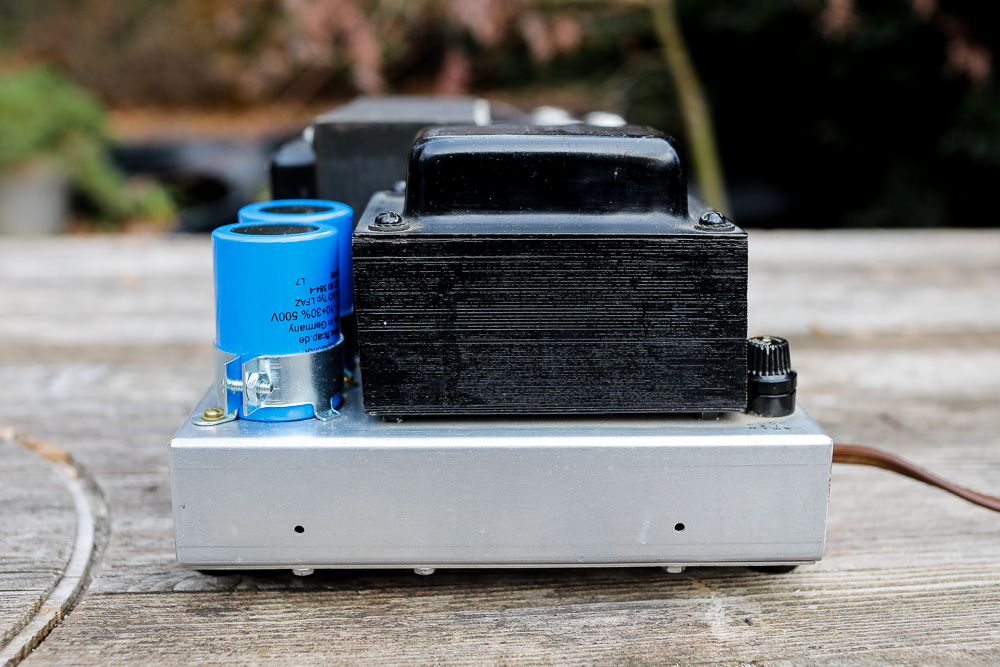
|
||||||||
|
Scott amps feature excellent transformers, and this set is no exception. |
||||||||
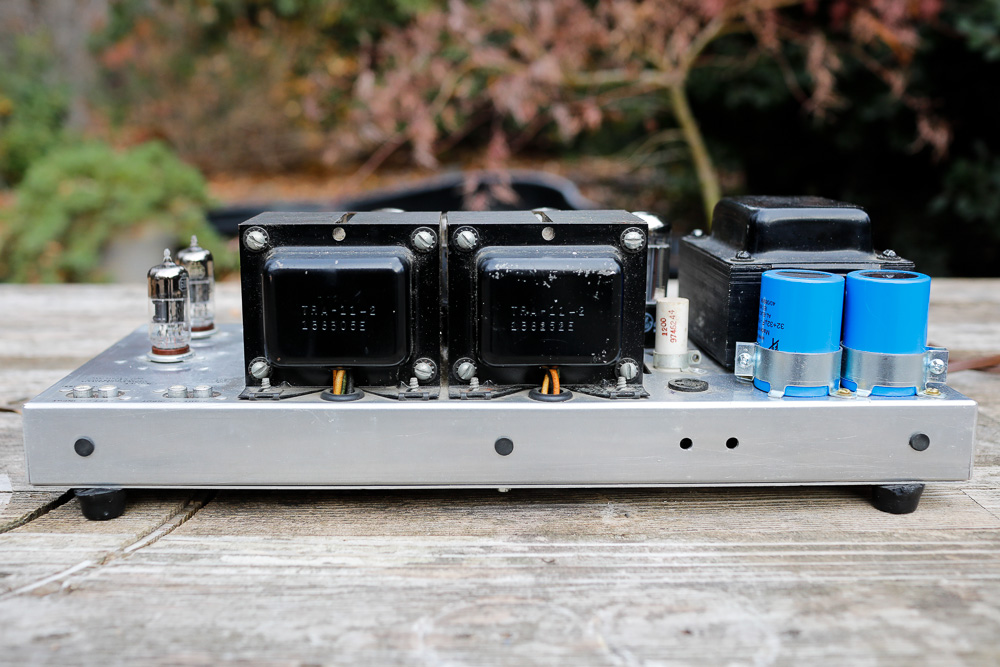
|
||||||||

|
||||||||
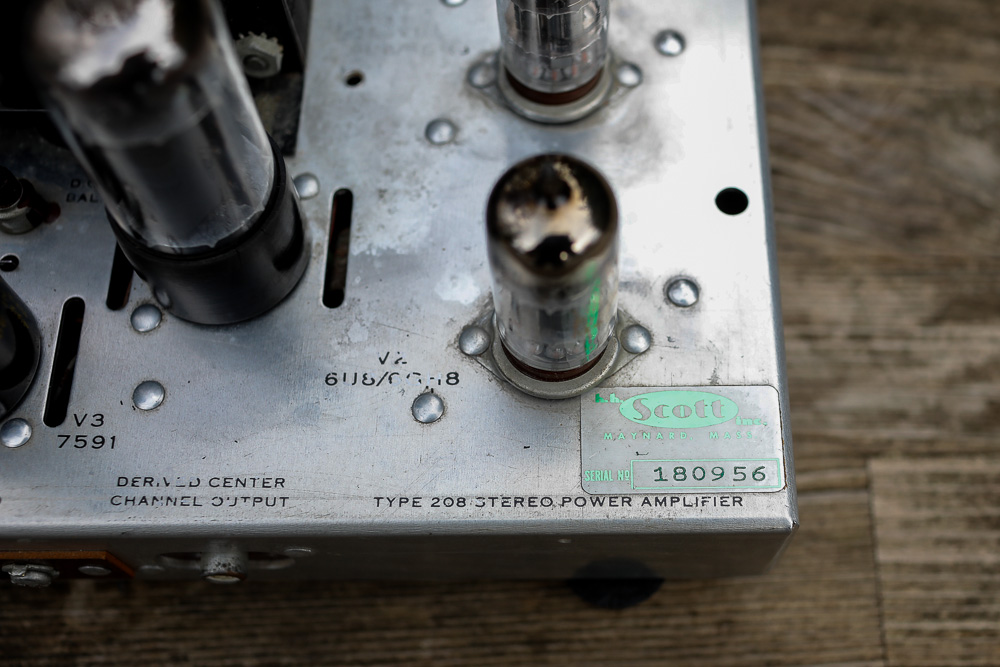
|
||||||||

|
||||||||
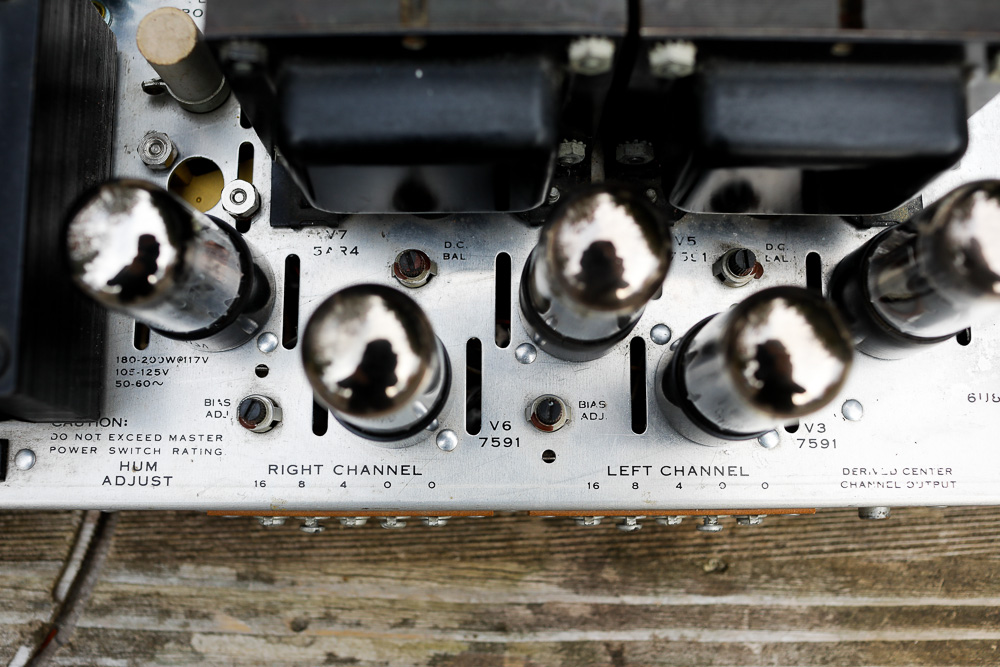
|
||||||||

|
||||||||
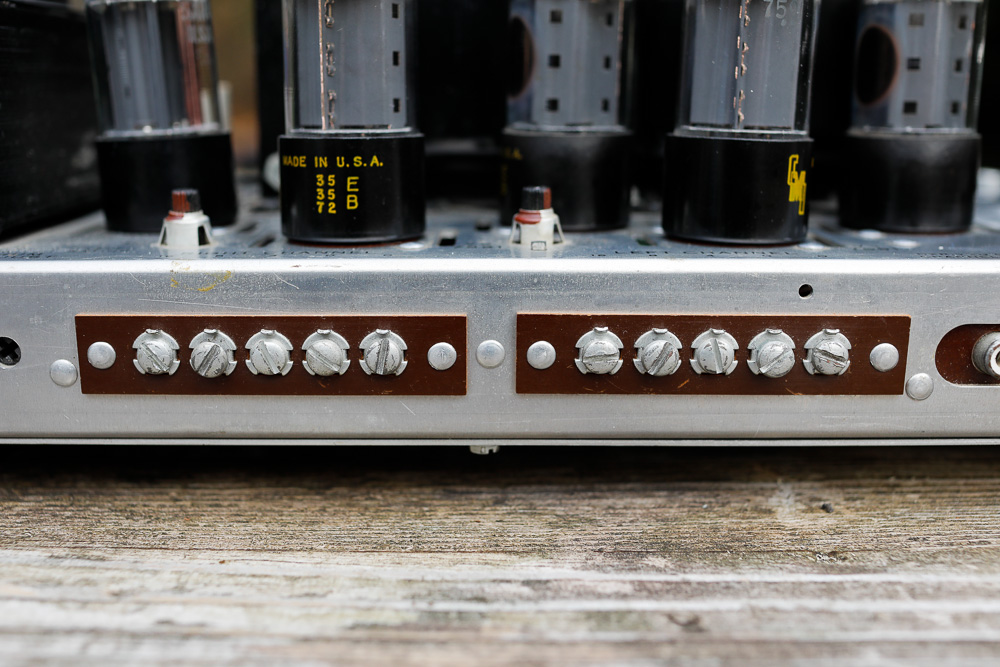
|
||||||||
|
These are pretty typical speaker strips found on vintage equipment. In the old days people hooked bare wire into these, but I’ve found it easiest to use banana plug adapters. |
||||||||
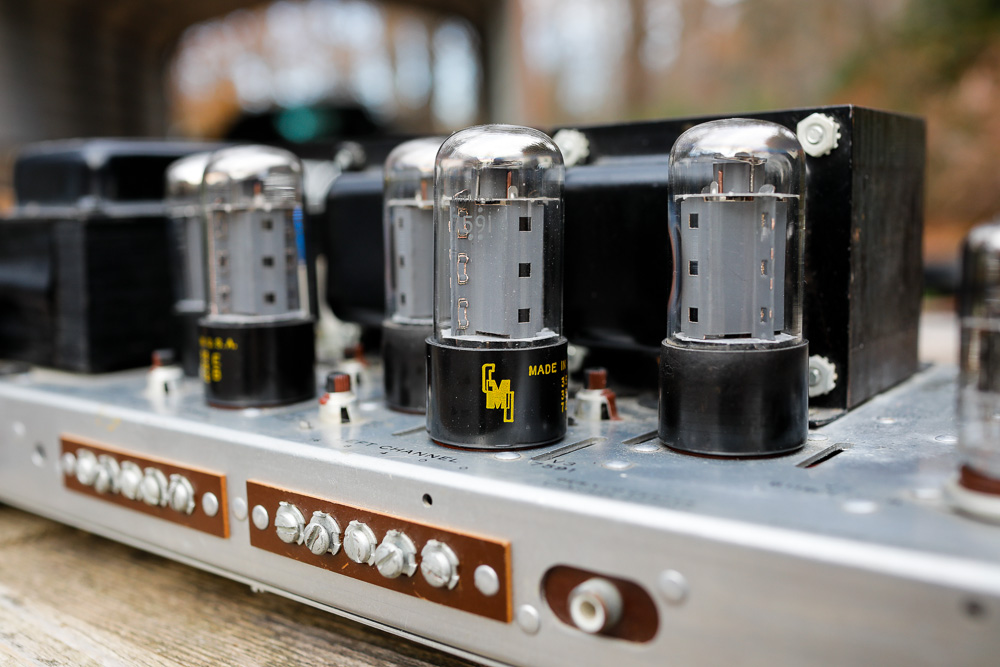
|
||||||||
|
The 299C and the 208 are, as mentioned, both 7591 amps. I feel that the 7591 represents the very height of tube technology, designed and made late in the game and at a time when the technology was well understood and well executed. I think it is one of the best sounding push pull tubes of all time. Another famous (and iconic) amplifier that used the 7591 was the McIntosh 225, a favorite of this website. (Side by side comparison notes further below.) Pictured here is a vintage 60s quad of 7591, made by either Westinghouse or Sylvania and branded to CMI. Superb tubes! |
||||||||
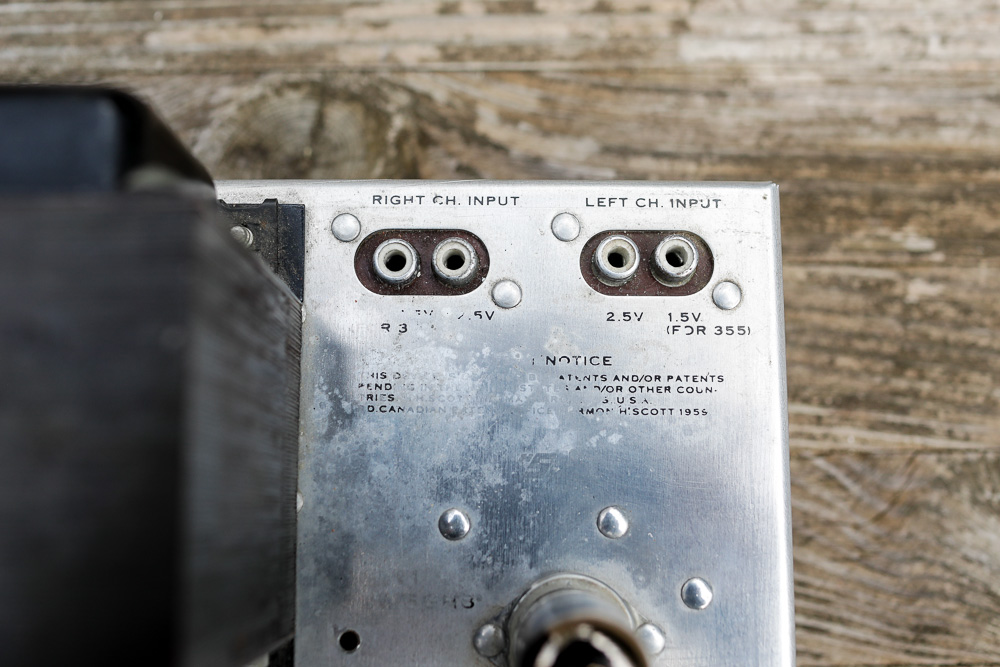
|
||||||||
|
An interesting feature of the 208 are dual inputs, one at 1.5v and one at 2.5v. I’ve found that the 1.5v input works really well with a passive preamp, making for a very pure sound. |
||||||||
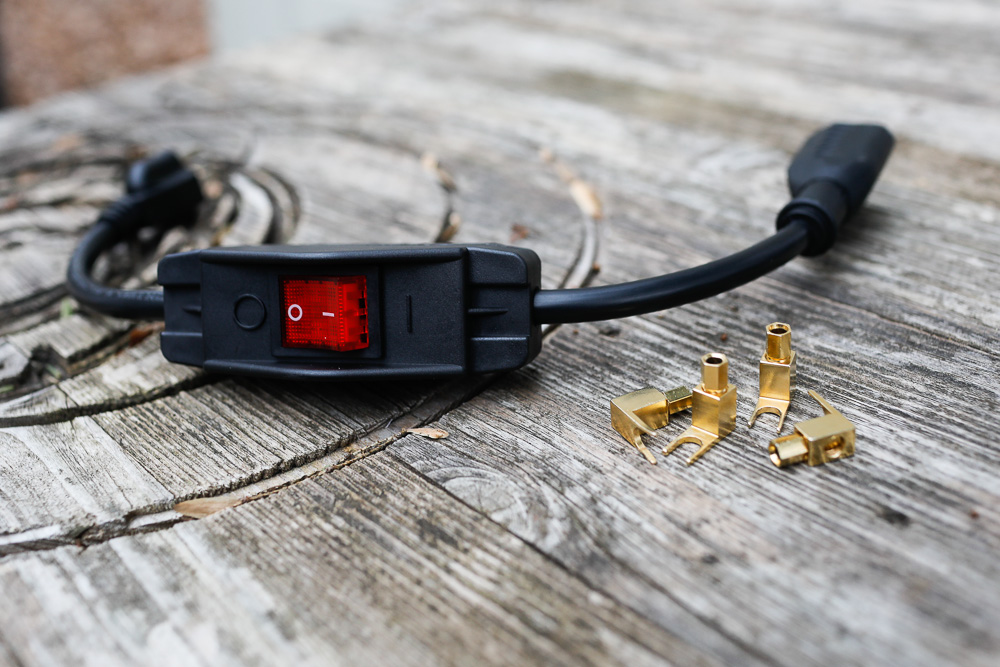
|
||||||||
|
Here are some things that make life with a vintage power amplifier a little easier. Nice audiophool stocking stuffers. |
||||||||
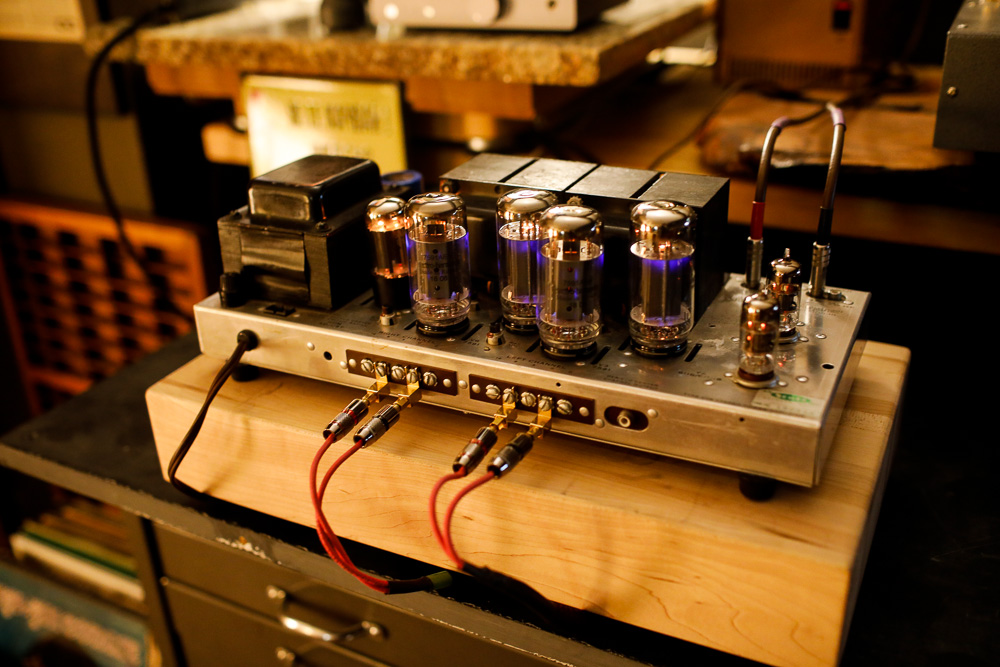
|
||||||||
|
The modern Russian Electro Harmonix 7591 make a great blue/purple glow when in use, which is very appealing. These really look like 6L6 glass to me, and I have to wonder if they’ve been repurposed with 7591 guts? |
||||||||
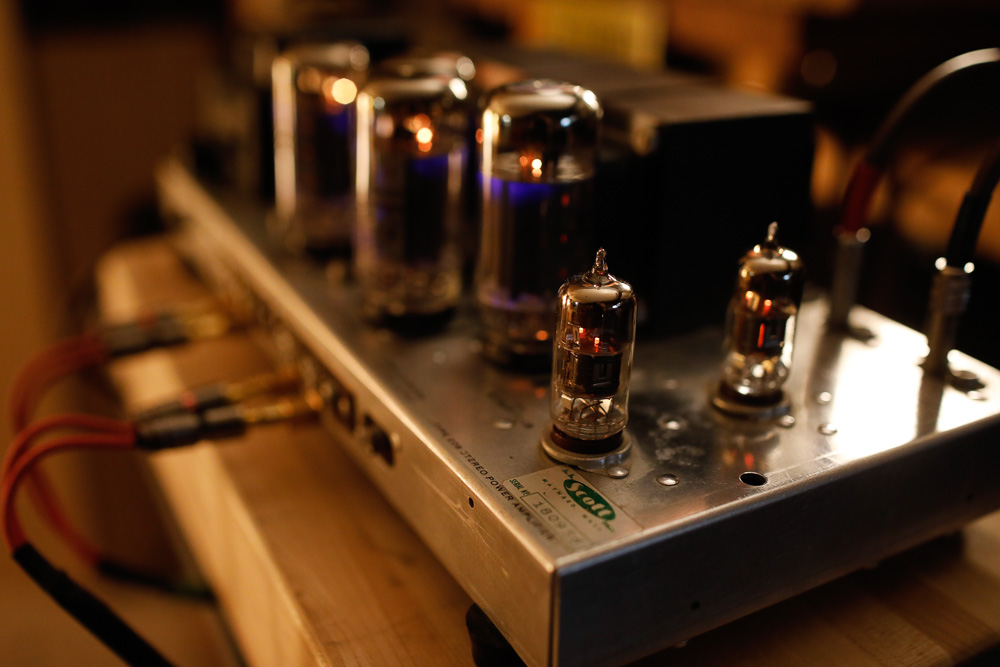
|
||||||||

|
||||||||
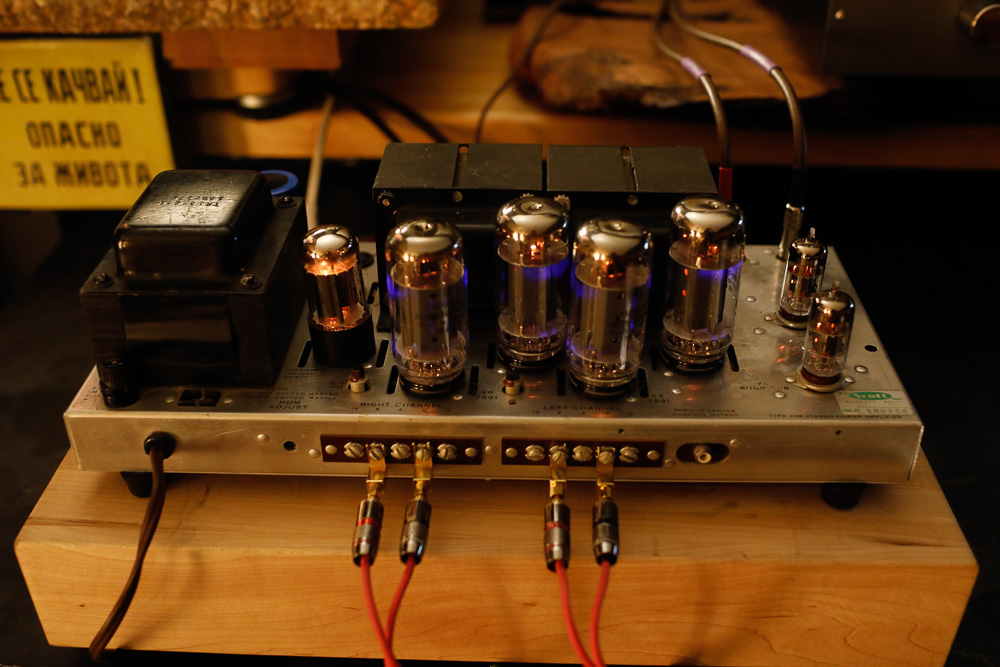
|
||||||||

|
||||||||
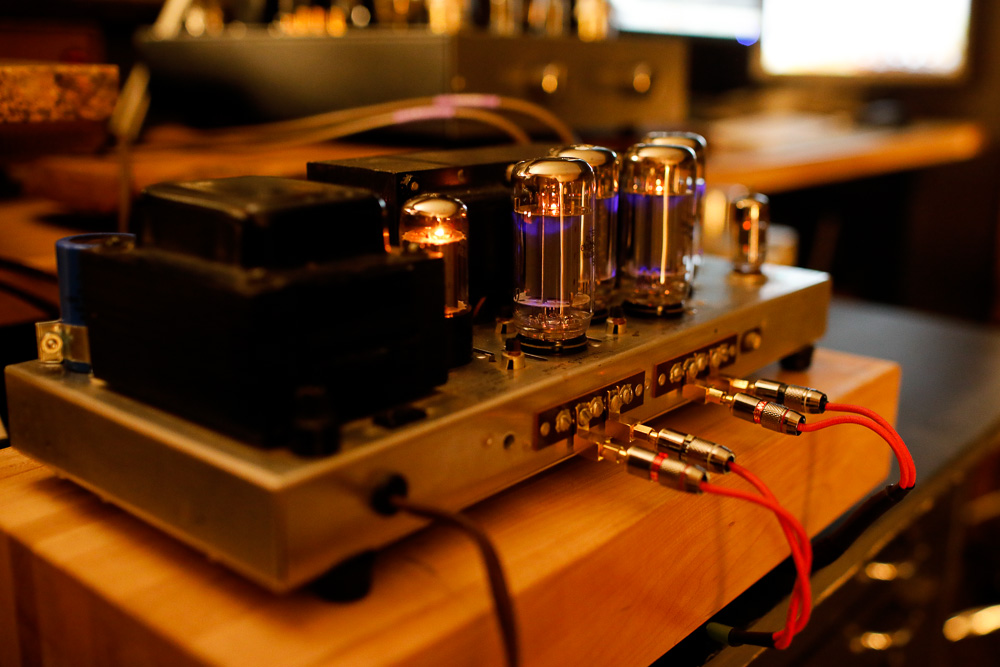
|
||||||||

|
||||||||
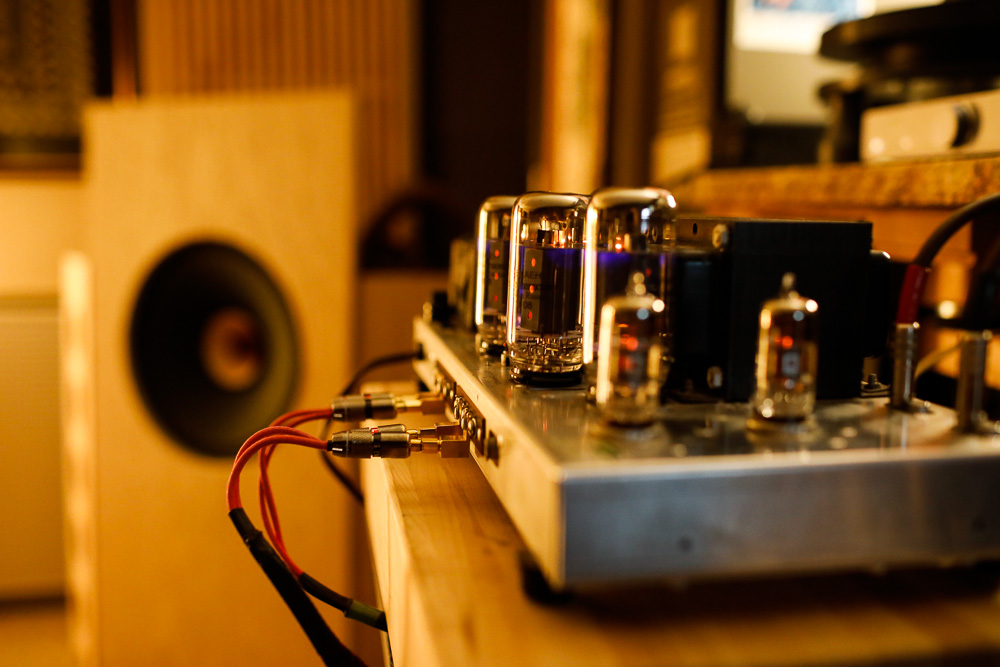
|
||||||||
|
Hooked up to the Lii Audio F18 this amp has power, grunt and finesse. A great combination and a super match to these high efficiency speakers. And the Scott is completely silent at idle on these 100 db/wm drivers, a nice feature and a sign of a well done rebuild. |
||||||||
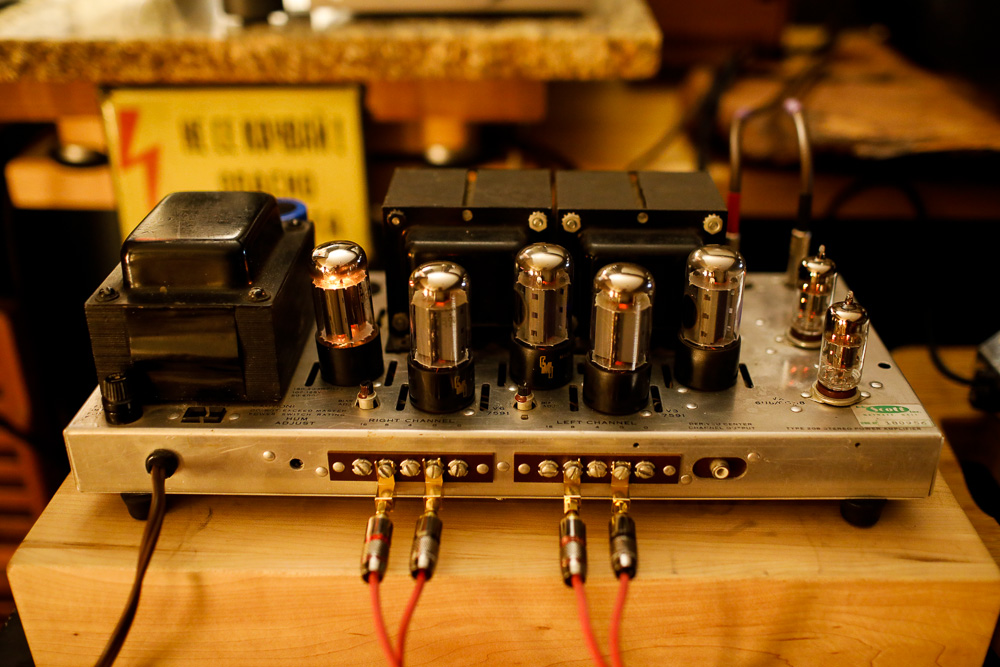
|
||||||||
|
Here are the CMI branded 1960s tubes again. These sound very good, but the new production Electro Harmonix have a little more slam and power. Are the older tubes worth the prices? It's a tough call, but I think the answer (at 2022 prices) is still Yes. Reliability and lifetime may actually be better from the old NOS tubes. But from strictly a fidelity standpoint, after extended listening I have come to the conclusion that although there are some small subtleties, there is not a whole lot of real difference in sound quality. Its not a 45 vs 300B sound difference, its much more elusive. Of course, this is the “real” sound of the 7591, so there is that, and I am suspicious of the newer tubes and whether they are actually 7591 and not simply repurposed 6L6. If you intend to play with vintage amps, I think its worth having a quad of the original tubes. Then there is no need to second guess. |
||||||||
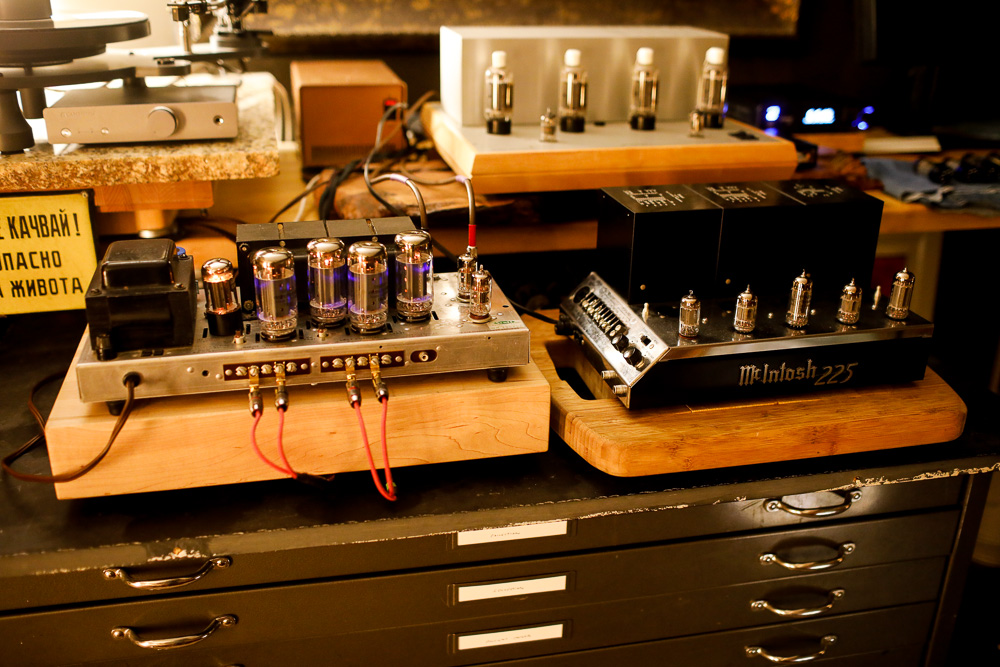
|
||||||||
|
The vintage 7591 shootout! H.H. Scott 208 vs McIntosh 225. For this test, both amps ran the same pair of EH 7591, pictured above in the Scott amp. Disclaimer: I LOVE the McIntosh 225. But…I have to admit that performance is a lot closer than I thought it would be. The Scott has a little bit of a sharper and more direct sound, the McIntosh is a little warmer and denser sounding (but not fuzzy or soft) with more of a lush and velvety presentation. Both image very well and way better than one would have thought, even compared to the best of the SET amp crowd. The McIntosh has a slightly more pleasing sound to my ears; it has more body and a bit more fleshed out sound, and I like it better overall. But someone else might easily have the opposite opinion. I had envisioned the Mac just mopping the floor with the Scott 208 but that is certainly not the case. I think reality is that anyone would be thrilled with the output of either of these, and although I’m keeping the 225, in this case that has more to do with cosmetics, style and the “coolness” factor than fidelity. Note: in the background is Roger Modjeski’s final masterpiece; the Music Reference OTL-1, coming soon. Spoiler alert: its STUNNING. |
||||||||
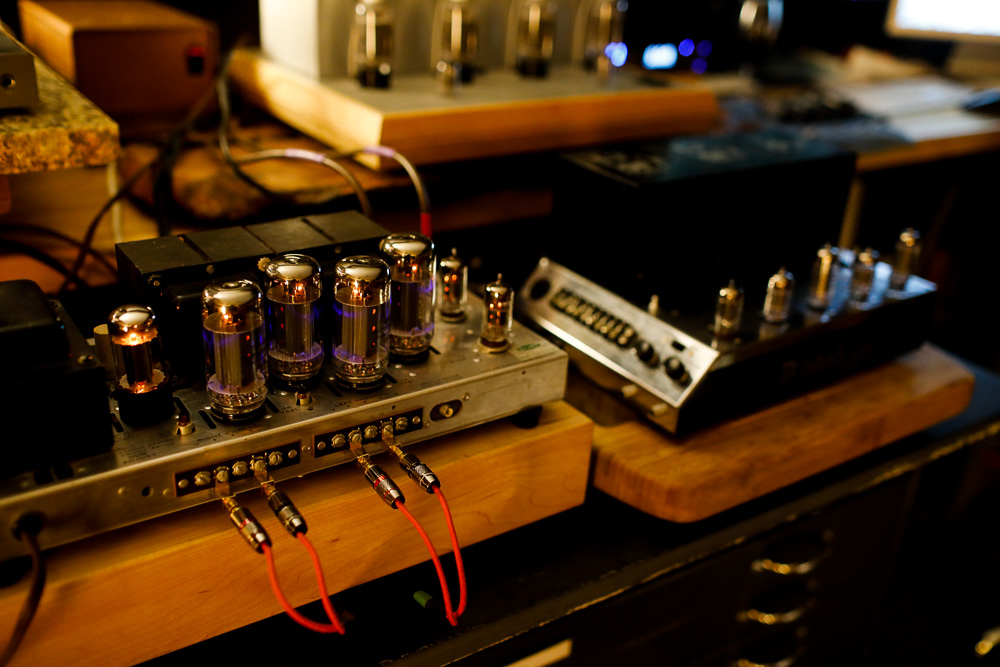
|
||||||||

|
||||||||
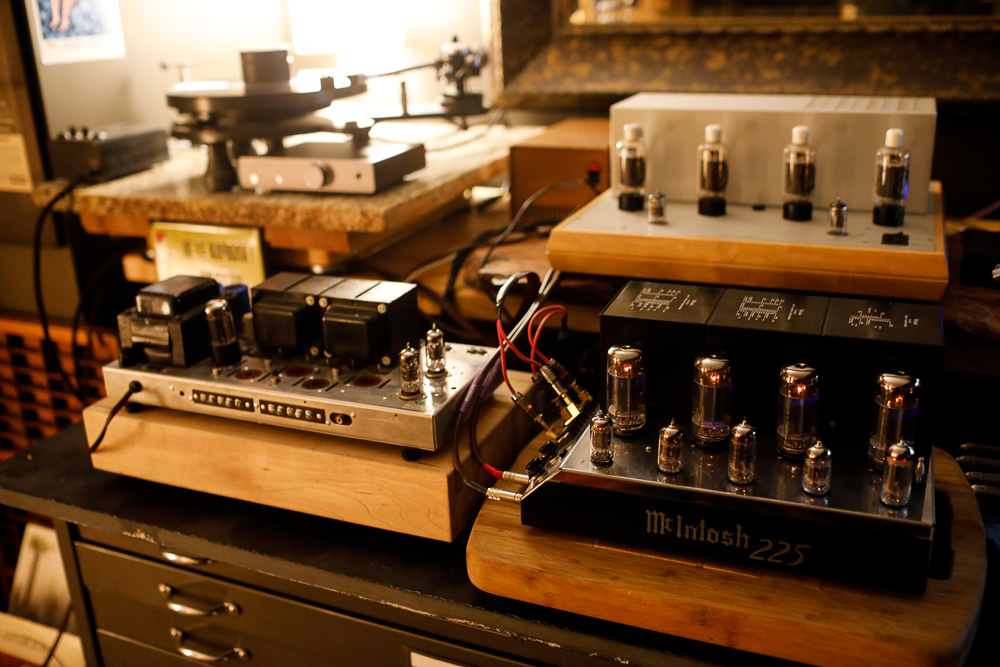
|
 |
|||||||
 |
 |
 |
 |
 |
|||
 |
|||||||
 |
|||||||